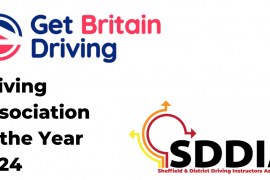Welcome to the world of driving! You’ve been out with a instructor a few times, you are moving off and stopping nicely and starting to get to grips with junctions and probably roundabouts. You want to speed things up. This is where private practice comes in.
Not all learner drivers have access to a car, or a suitable driver to supervise, for private practice but if you do it can help boost confidence, cement learning from lessons and reduce the number of paid hours it takes to learn to drive.
But how to get started?
Getting Everything Ready.
The Car:
The world is your Oyster when it comes to cars. The only restriction on what car you do private practice in is your budget. Which brings a question, what are the best L plates to use on a Lamborghini?
While it would be helpful to have the same or similar car to your instructors car it’s not important. The benefits of private practice more then outweigh the ‘fuzzy factor’ of driving different cars. Really any road experience is good so get out there.
About the only thing you really need to remember here is that to get maximum benefit from your practice, if you are learning in an automatic car, don’t buy a manual!
Insurance:
Any vehicle used on public roads, or on private land with a public right of access like Meadowhall car park for instance, must be covered as a minimum by Third Party Only insurance for all drivers.
This means any time you are behind the wheel you must be insured for that vehicle. Most choose to be added as a named driver to the insurance policy already in place on the car. There are other services available which allow you to buy a specific bolt on insurance so that you can be named on a car without adding yourself to the insurance on the vehicle in question.
A quick internet search will let you know which companies offer bolt on insurances.
Supervising Driver:
There are a few requirements for your supervising driver. They must be:
: : Over 21 years of age. Some insurance policies may require the supervisor to be over 25.
: : A full licence holder in the UK for at least three years for the type of vehicle the learner is driving. I.e. An automatic licence holder cannot supervise a manual learner in a manual car, (but they can supervise you in an automatic).
: : The supervising driver must comply with all rules that apply to a driver. E.g. they must not use mobile devices and must not drink, use drugs or be otherwise impaired while supervising.
L Plates:
Any learner driver must display red L plates when driving a vehicle. The vehicle must be clearly marked front and rear and the markings shouldn’t interfere with visibility; so its probably best to keep away from the windows on small cars.
There are a range of options to choose from. The most popular option is magnetic L plates, they are easy to remove when the learner isn’t driving and don’t leave permanent marks on the car. Some cars are made of aluminium which is of course, not magnetic so other options are needed.
If you have a bigger car you could go for ones that stick to the inside or outside of the windows. There are also sucker held L plates available on Amazon. They are very good and hold even at 70mph. I use them on my driving school car. Failing any other option, you can get self adhesive plates which stick to the body work.
These plates must meet specific dimensions: The plate should be 178mm square and the L should be to a specific size also.

There is an exemption in legislation which allows your driving instructor to drive a vehicle displaying L plates. This doesn’t apply to non-driving school vehicles so be sure if you switch over and let your supervising driver drive, you remove the L Plates. If your plates cannot be removed, they should be covered up when a full licence holder is driving.






